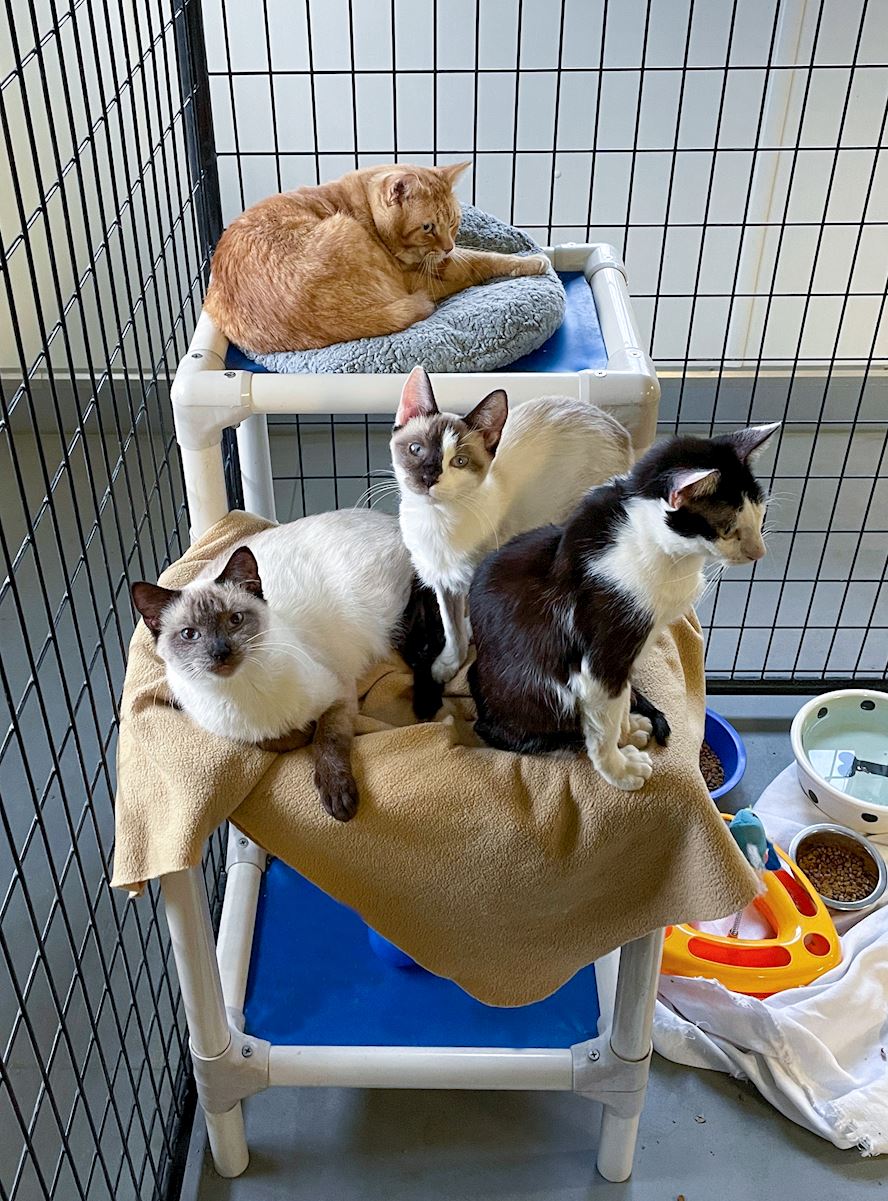posted
on Wednesday, November 16, 2022
in
Pet Help
 Cats that come from hoarding situations have spent most of their lives with other cats and many times have had very little contact with people.
Cats that come from hoarding situations have spent most of their lives with other cats and many times have had very little contact with people.
They can be fearful in new situations, especially when meeting new people and are usually not used to a carrier. However with time, patience, and positive reinforcement techniques like clicker training and play therapy, these cats can experience a reduction in their stress and become a part of the family.
What to Expect
When you first get your new cat home, they will likely be fearful and want to hide.
The best way to help your cat adjust to their new home is to set them up somewhere in your house that is small, like a bathroom or a spare room. In this room, provide everything they will need: food, water, a litterbox, a bed, and toys. Visit them every day, several times a day, doing positive things when you’re with them, like talking to them, offering high-value treats or engaging in play. Once they become comfortable in their room and with you and begin seeking attention, you can let them out into the rest of your house. It may be best to start with another small area of your house and build up to giving them total access.
They may always be fearful of new situations and new people.
Due to a lack of socialization from kittenhood, hoarding cats may always be quick to run and hide when people come over or when they hear loud noises or see fast movements. However, you can help them work through their fear and recover more quickly. One great way to help is by using positive reinforcement training techniques like using rewards or clicker training.
There are also stress-reducing products like Feliway that can help your new cat adjust in new situations.
They may never be a lap cat or enjoy being picked up and held.
Due to a lack of handling throughout their life, hoarding cats are often not used to being handled and may not be comfortable being in laps or may struggle when they are picked up. Using food rewards is a great way to help them become more comfortable with being handled. Every time your cat comes near you when you are sitting down, give them a treat, and as they stay longer, continue to positively reinforce that behavior with treats. If they ever get into your lap, continue to reinforce that behavior with treats but let them leave if they want. When picking up your cat, pair it with treats and remember to keep handling to a minimum and build up the amount of time as they become more comfortable. Until they becomes more comfortable, you can positively interact with them in other ways, such as play therapy or clicker training.
They may not be comfortable being in a carrier.
Most often, the only times a hoarding cat was ever placed in a carrier were the day they were taken from their home and during their time at the shelter. The best way to help your new cat be less fearful of the carrier is to work on positive reinforcement training. You can also leave the carrier out, allowing your cat to go in when they please and feed them treats in the carrier to help them begin to associate the carrier with good things.
Learn more about acclimating your cat to a carrier here.
They may do well in a home with other cats, but it’s always best to introduce new cats to your resident cats slowly.
Hoarded cats have spent their entire lives around cats and most prefer the company of cats. However it’s important to remember that your cat is coming into a completely new environment and will be meeting cats they do not know. It’s best to take things slow and use proper introduction techniques and positive reinforcement. This will help make introductions less stressful and set everyone up for success.
Learn more about how to introduce a cat to other cats here.
What Not to Do
- Never force your cat to spend time with their new family or new people. Allow them the chance to approach and positively reinforce their interactions with people – for example, giving treats when they approach.
- Never chase your cat. If you find yourself in a situation where you need to handle your cat for medicating or putting in a carrier, do not chase them around the house to catch them. Instead wait until they have settled somewhere, like their bed and then approach them.
- Never punish your new cat for showing fearful behavior, such hissing or hiding, or showing any other unwanted behavior. Punishment will only make them fearful of you and can lead to aggression. Instead use positive reinforcement training to build trust with your cat and understand that it may take time for your new cat to settle in.